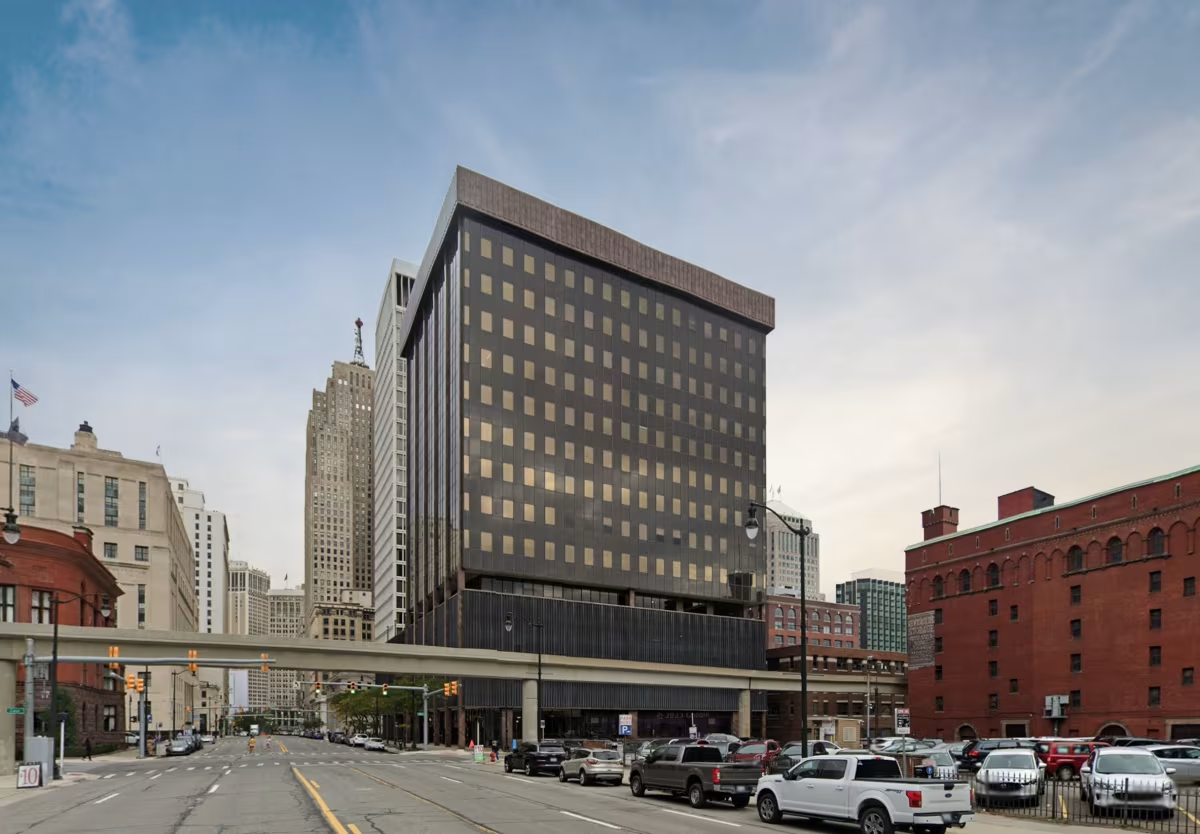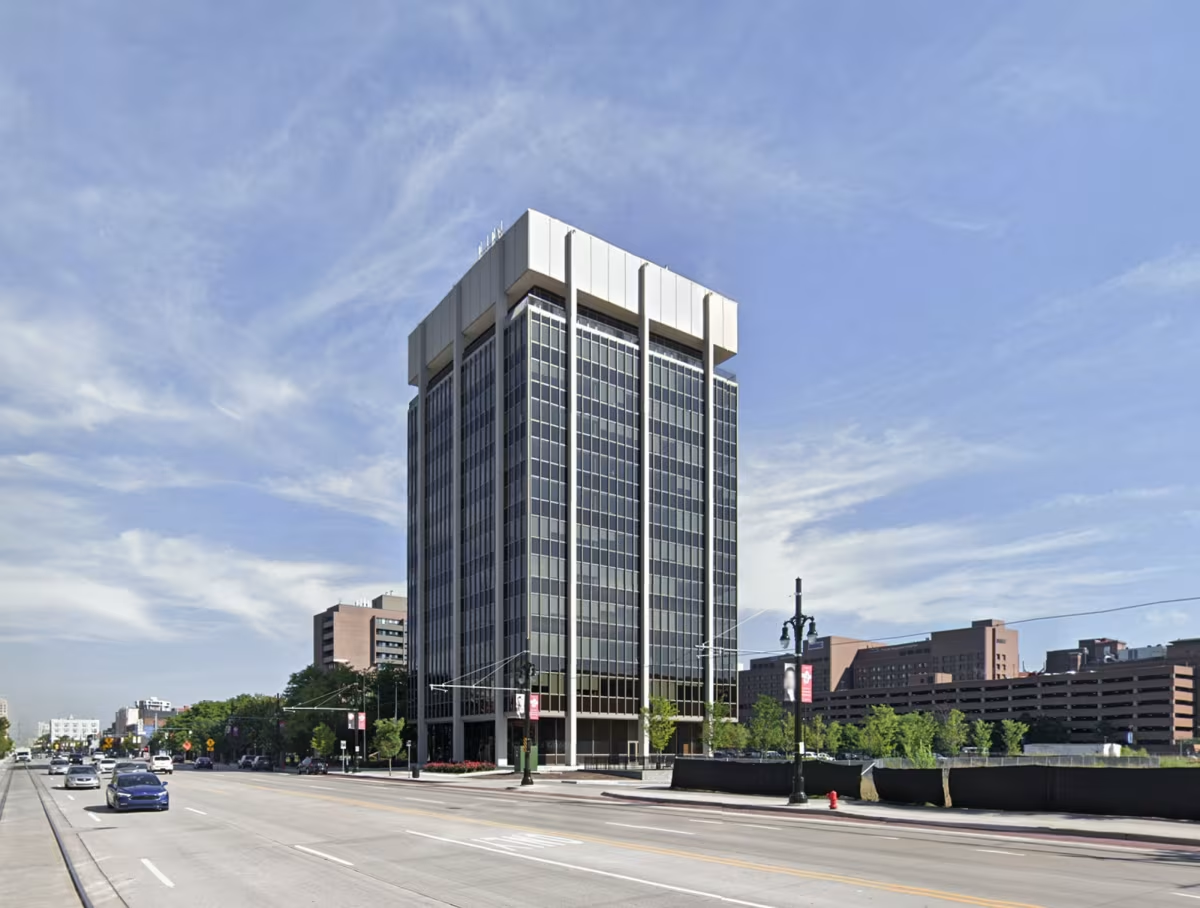Fort Washington Plaza vs Professional Plaza Tower


Comparing the Fort Washington Plaza and the Professional Plaza Tower is interesting because they both stand in Detroit, MI, and were completed within 3 years of each other, but they were designed by different architects.
This offers a unique glimpse at how rival designers approached projects in the same city during the same era.
Height & Size
The Fort Washington Plaza is clearly the larger tower of the two, both in terms of height and number of floors. It rises to 197ft (60m) with 16 floors above ground, while the Professional Plaza Tower reaches 154ft (47m) with 12 floors above ground.
Of course, each project may have faced different briefs or regulatory constraints, which we don't really know about and could also explain the outcome.
Architectural Style
Both the Fort Washington Plaza and the Professional Plaza Tower were designed in line with the aesthetic conventions of the International Style style.
At the time, this style was at the height of its popularity. So both Louis G. Redstone & Associates and Crane & Gorwic followed what was in many ways expected of them, producing designs that fit comfortably within contemporary architectural norms, rather than breaking with convention.
Uses
The Fort Washington Plaza is primarily commercial, while the Professional Plaza Tower is primarily residential.
Originally, the Professional Plaza Tower was designed for medical, but over time it was converted to residential. The Fort Washington Plaza by contrast has maintained its original role.
The Professional Plaza Tower offers 72 residential units.
The Fort Washington Plaza also provides 524 parking spaces.
Structure & Facade
The two towers rely on different structural systems, reflecting distinct engineering strategies.
The Fort Washington Plaza uses a Frame structural system, which relies on a regular grid of columns and beams to sustain its weight, while the Professional Plaza Tower uses a Framed Tube In Tube system, that combines a strong central core with a perimeter tube of columns.
Yet, when it comes to their facade, they both employed the same solution, a Curtain Wall facade.
A curtain wall is a non-load-bearing facade hung from the structural frame. It is anchored to floor slabs and transfers only its own weight and wind loads, allowing for sleek, glassy exteriors.
| Fort Washington Plaza | Professional Plaza Tower | |
|---|---|---|
| Louis G. Redstone & Associates | Architect | Crane & Gorwic |
| 1969 | Year Completed | 1966 |
| International Style | Architectural Style | International Style |
| Commercial | Current Use | Residential |
| 16 | Floors Above Ground | 12 |
| 60 m | Height (m) | 47 m |
| Frame | Structure Type | Framed Tube In Tube |
| Concrete | Vertical Structure Material | Concrete |
| Concrete | Horizontal Structure Material | Concrete |
| Yes | Facade Structural? | Yes |
| Glass, Concrete | Main Facade Material | Aluminum, Glass |
| MI | State | MI |
| Detroit | City | Detroit |
| 333 West Fort Street | Address | 3800 Woodward Avenue |